PROXIMANOVA-LIGHT.OTF PROXIMANOVA-LIGHTIT.OTF PROXIMANOVA-EXTRABLD.OTF PROXIMANOVA-BOLD.OTFPROXIMANOVA-BLACK.OTF
Get this font in here!
This Article Applies to:
- Avast Small Business Solutions
- Avast Small Office Protection
Browser Shield (ex Password Protection) helps secure the passwords stored in web browsers. If left unprotected, passwords stored in web browsers may be vulnerable to malware and theft by unwanted applications. Browser Shield allows you to choose which apps have access to your saved passwords. It also blocks access to browser cookies to protect your personal and sensitive data.
The following browsers are supported:
- Google Chrome
- Mozilla Firefox
- Microsoft Edge
- Avast Secure Browser
Note that Browser Shield is available for Windows workstations only.
How Browser Shield Works
Browser Shield functions by monitoring the files on the disk where the browser passwords are stored.
Google Chrome
The stored passwords are in chrome://settings/passwords (Settings > Autofill and passwords > Google Password Manager).
Data is stored and protected in %LocalAppData%\Google\Chrome\User Data\Default\Login Data.
Mozilla Firefox
In Firefox, the logins are in about:logins (Menu > Passwords).
Data is stored and protected in %AppData%\Mozilla\Firefox\Profiles\*\key4.db / logins.json.
Microsoft Edge
In Edge, the passwords are in edge://settings/passwords (Settings > Profiles > Passwords).
Data is stored and protected in %LocalAppData%\Microsoft\Edge\User Data\Default\Login Data.
Avast Secure Browser
The stored passwords are in secure://settings/passwords (Settings > Autofill > Password Manager).
Data is stored and protected in %LocalAppData%\AVAST Software\Browser\User Data\Default\Login Data.
Enabling/Disabling Browser Shield
Browser Shield can be accessed from the
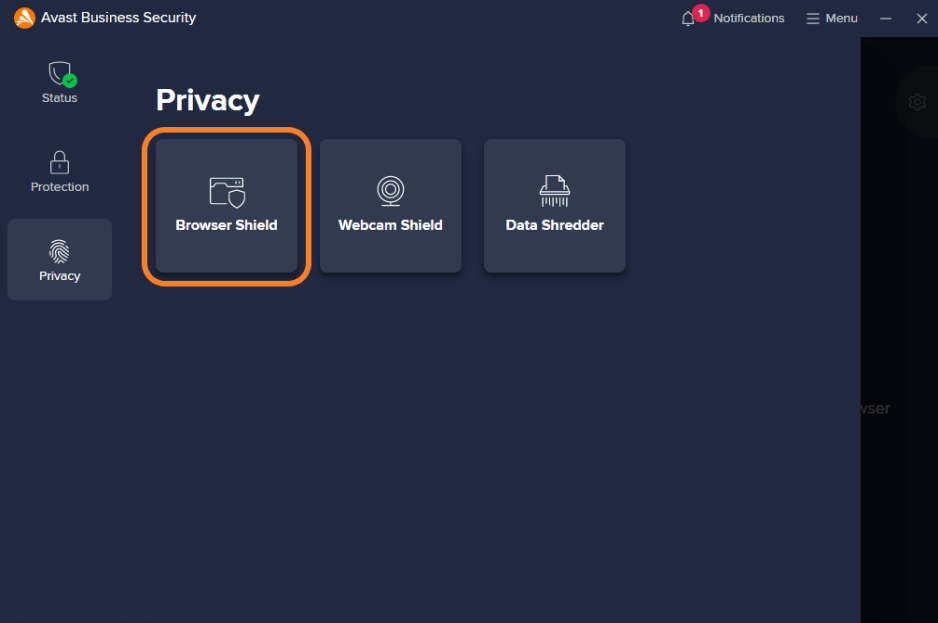
On the Browser Shield screen, you can enable/disable the component using the toggle, see the status of each supported browser, and access advanced settings (gear icon).
From the same screen, you can also directly access the Blocked & Allowed apps section of the settings (see Blocked & Allowed Apps below).
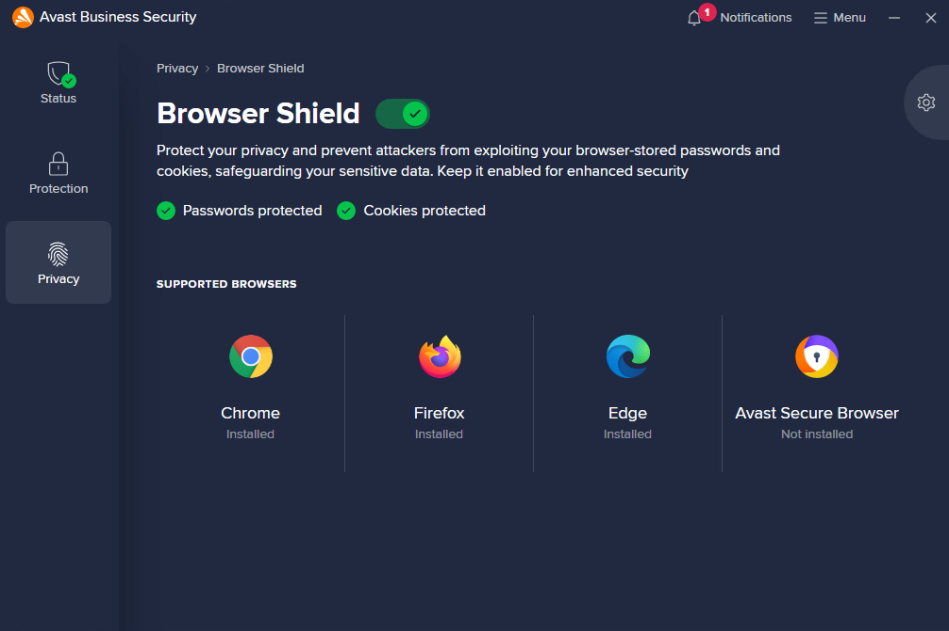
Configuring Browser Shield Settings
Advanced Browser Shield settings can be accessed by either clicking the gear icon on the Browser Shield screen or navigating to Menu > Settings >
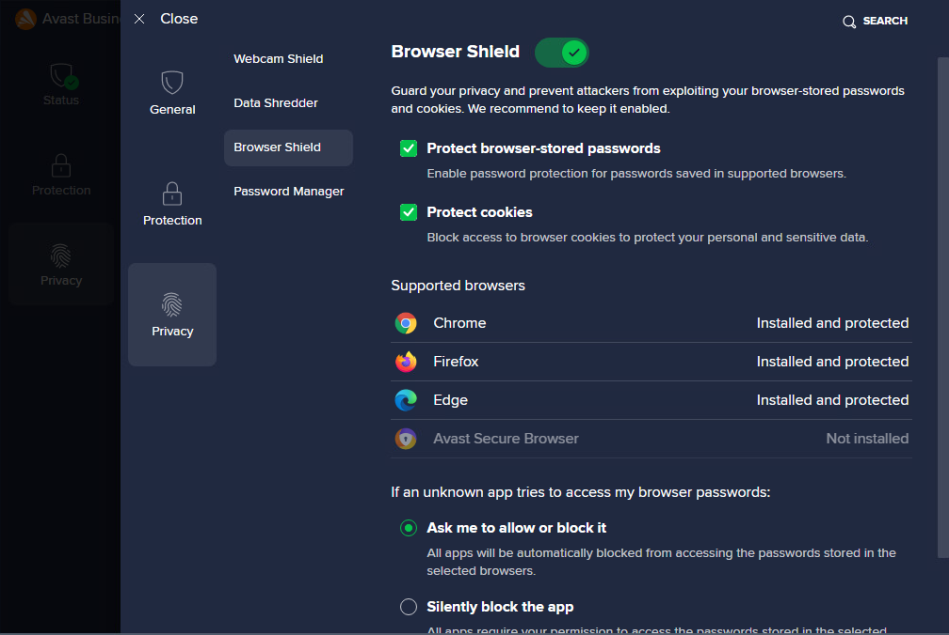
Here, you can again see the component status as well as supported browsers and their statuses. Furthermore, you can enable/disable protection of browser-stored passwords and/or cookies.
You can also select here whether Browser Shield will silently block any unknown applications trying to access your passwords or ask you what to do. If you choose Ask me to allow or block it, a dialog warning you of the possible threat will pop up each time such attempt is detected.

Selecting See details here will display the application name, browser, and data being accessed.
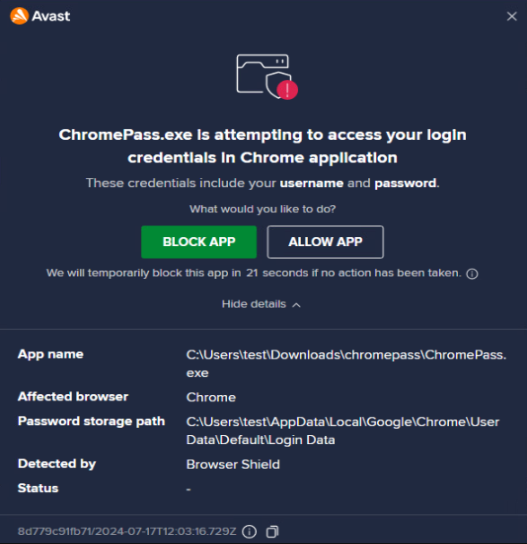
You can then decide whether to block or allow the app. If you select to block it (recommended), the dialog will confirm the application is blocked.
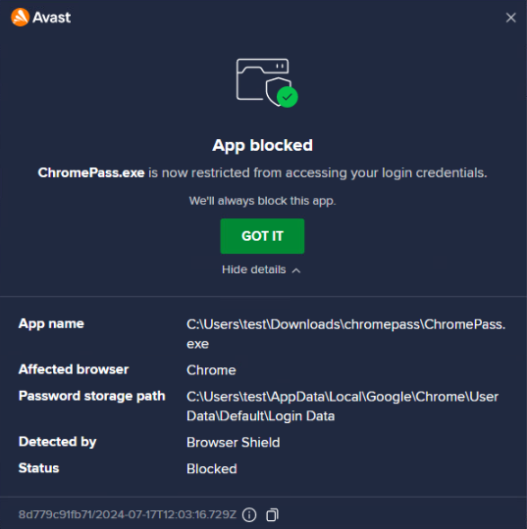
Then, the application will also be added to the blocked apps list.
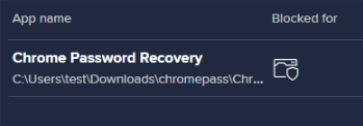
The app will also be temporarily blocked if you take no action during the 30-second timeout. The tooltip will provide more information.
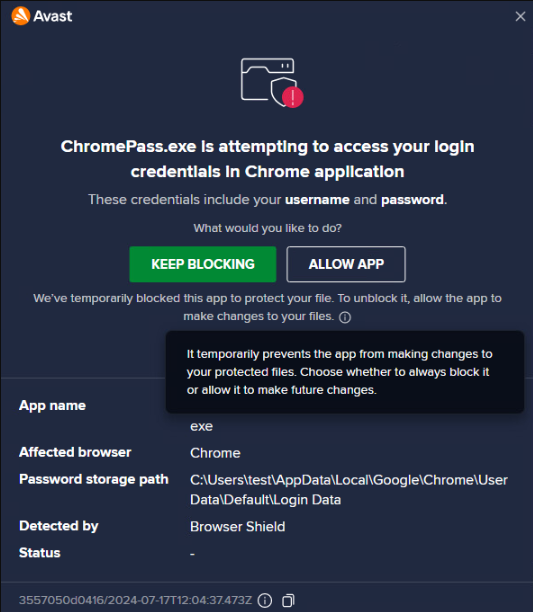
If you select to allow the application (not recommended), the dialog will confirm the application is allowed.
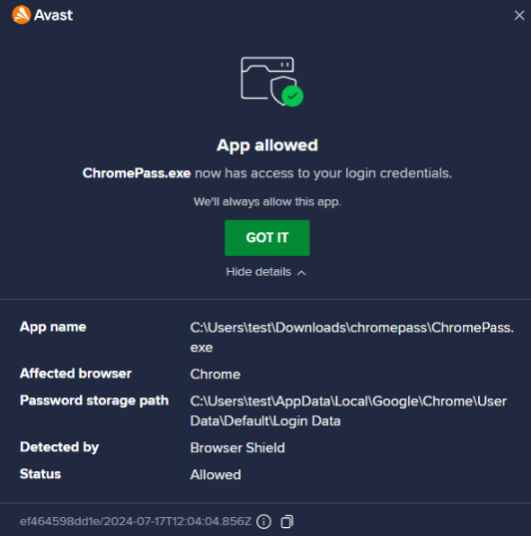
Then, the application will also be added to the allowed apps list.

The View allowed / blocked apps link at the bottom of the advanced settings screen provides a quick way to access the Blocked & Allowed apps list (see section below).
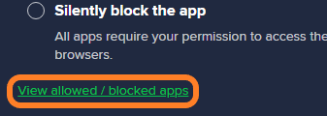
Blocked & Allowed Apps
If the device is managed by the Business Hub, the rules set here can be overridden by policy settings. For more information, see
As previously mentioned, clicking the View allowed / blocked apps link at the bottom of the settings screen
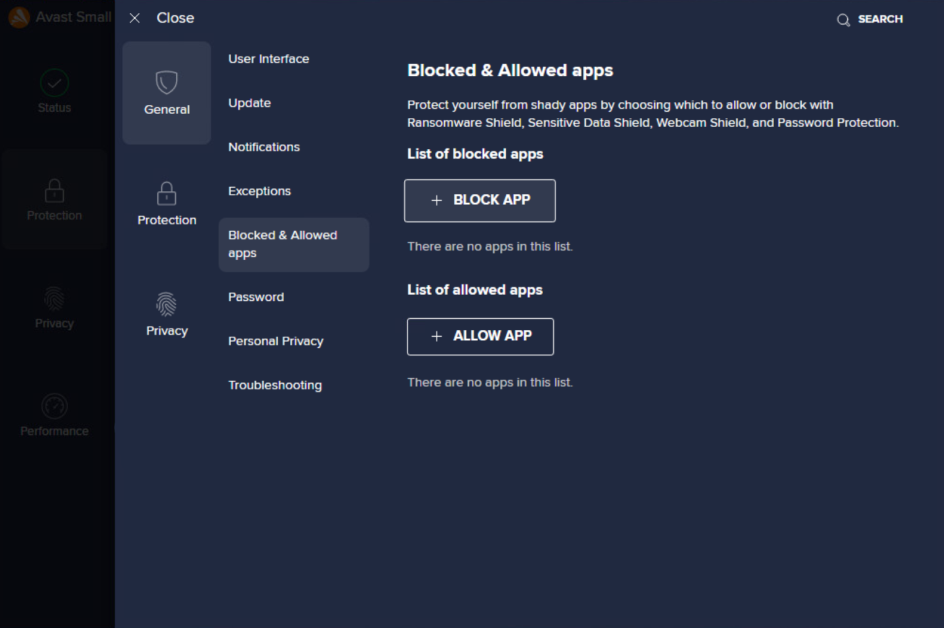
Here, you can configure individually each application that will be blocked/allowed
Clicking Block App or Allow App will open a dialog where you can either choose an active application directly from the list or click Select app manually to navigate elsewhere on the disk.
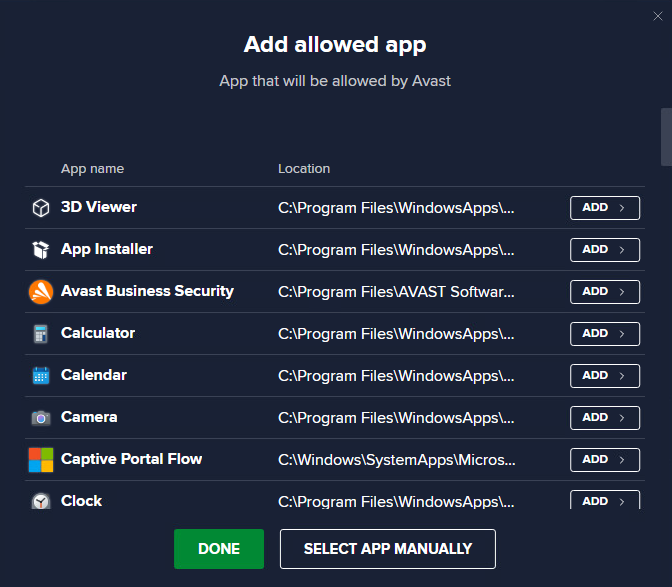
Once you select an app,
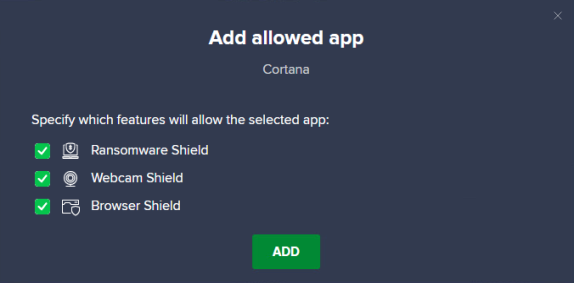
On the Blocked & Allowed Apps list, you will see the added applications and which components they apply to. You can edit or remove any listed app via its actions menu (three dots).
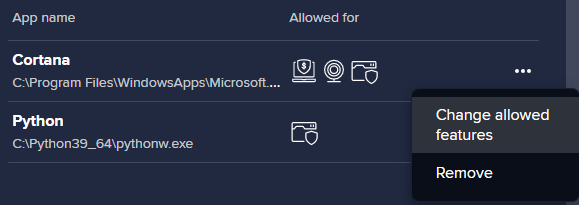
FAQ
 What should I use, Browser Shield or Password Manager (Avast Passwords)?
What should I use, Browser Shield or Password Manager (Avast Passwords)?
Avast Passwords is in EoL (end-of-life); therefore, it is recommended to use Browser Shield.
 Can I block an app for Browser Shield, but allow it for other shields?
Can I block an app for Browser Shield, but allow it for other shields?
Yes, the Blocked & Allowed apps list can be customized by each component for each application.
 Are detected apps from Browser Shield logged in the Business Hub
Are detected apps from Browser Shield logged in the Business HubNot at this time.
 Does Browser Shield support server OS?
Does Browser Shield support server OS?
No, there are no plans to implement, as browsing is usually not performed on server OS.
Other Articles In This Section:
Security Browser Extension (Avast Online Security & Privacy)
Services Available via Business Hub Only
Related Articles: